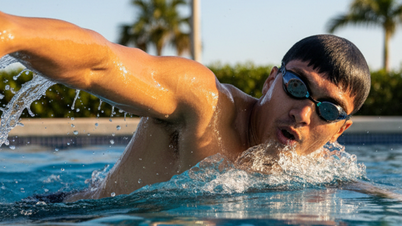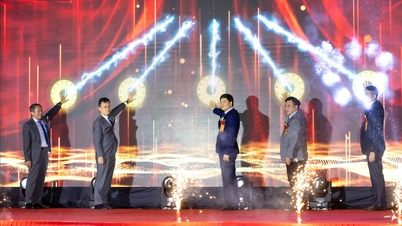The brain is constantly changing and adapting throughout life – a phenomenon called neurogenesis. Regular exercise, especially exercises that stimulate the body and challenge the mind, can help promote this process. This in turn helps the brain produce new cells, improving memory, learning ability and mental flexibility.
Here are three scientifically proven exercises that can help grow brain cells naturally:
1. Resistance training: Increase muscle strength and brain power
- 1. Resistance training: Increase muscle strength and brain power
- 2. Dual Exercise: Activate your mind and body at the same time
- 2.1 Walking combined with counting or chatting
- 2.2 Dance or practice rhythmic dancing
- 2.3 Tactical sports training (such as football, badminton, table tennis)
- 3. Leg Exercises: A Solid Foundation for Brain Health
- 4. How to incorporate these exercises into your daily routine?
Resistance training (also known as weight training) includes many forms of exercise in which muscles must work against an external force — such as weights, resistance bands, or your own body weight.
Neurological studies show that resistance training can increase levels of BDNF (Brain-Derived Neurotrophic Factor), which helps stimulate the formation of new neurons in important areas such as the hippocampus – the center of learning and memory.
Common resistance exercises include weightlifting, squats, lunges, push-ups, and resistance band exercises. When performed regularly, these exercises not only help build muscle, but also improve cognitive function by promoting neuroplasticity – the brain’s ability to adapt, create, and strengthen new neural connections.

Strength training exercises have significant benefits for brain health and performance.
Numerous studies have shown that even moderate resistance training, performed 2–3 times per week, has significant benefits for brain health and performance. In particular, regular exercise helps combat age-related muscle loss (sarcopenia), improves mobility, and reduces the risk of falls or head injuries, factors that can negatively impact long-term cognitive health.
2. Dual Exercise: Activate your mind and body at the same time
Dual-task training is a form of exercise that combines both physical and mental training, helping the body and brain work in sync. These exercises require the practitioner to move while also focusing on processing information or reacting quickly, so they bring superior results for brain health compared to only one-way training.
This form of “multitasking” exercise simultaneously activates multiple neural networks responsible for attention, coordination, and executive function, enhancing the brain’s processing and response capabilities. Neuroscience studies show that, because it requires the participation of multiple brain regions at once, dual exercise increases BDNF levels, thereby stimulating synaptic plasticity and promoting the formation of new neurons.
The combination of mental challenge and physical activity helps the brain develop stronger neural networks, supporting flexible thinking, improving memory and concentration. In older adults, dual training has also been shown to slow cognitive decline and increase autonomy in daily activities.
Here are some specific examples of "dual exercise" - that is, activities that both move the body and activate the brain, which neuroscientists have found to be very effective in maintaining memory, increasing concentration and preventing cognitive decline:
2.1 Walking combined with counting or chatting
- How to do it: While walking, count the number of steps at different rhythms (e.g., count 2 steps, then 3 steps), or talk, recite poetry, or sing to the rhythm.
- Effect: Activates the brain area responsible for language, short-term memory and motor coordination.
2.2 Dance or practice rhythmic dancing
- How to do: Dance to music with different sequences of moves, requiring memorization and changing of beats.
- Effect: Stimulates the hippocampus (memory), motor cortex and prefrontal cortex (executive function, decision making).
2.3 Tactical sports training (such as soccer, badminton, table tennis)
- How to do it: Participate in sports that require players to move quickly, observe, and make instant decisions.
- Effect: Practice the ability to handle situations, judge space and coordinate hands - eyes - feet.

Leg exercises maintain overall body health and brain clarity.
3. Leg Exercises: A Solid Foundation for Brain Health
Leg exercises like squats, lunges, stair climbing, and similar movements not only help the body stay healthy, but also benefit the brain. This is because they activate the body’s largest muscle groups. When these muscles contract, they create and send powerful biochemical signals to the brain, stimulating increased production of BDNF (Brain-Derived Neurotrophic Factor) – a key factor that helps nerve cells grow and connect more effectively.
In addition, exercises such as brisk walking or jogging – which are known for their cardiovascular benefits – also help increase blood flow to the brain, carrying oxygen and essential nutrients for the recovery and regeneration of nerve cells. Thanks to that, the brain works more flexibly, memory and concentration are significantly improved.
In addition to its direct effects on the brain, leg exercises also help improve balance, coordination, and endurance, thereby reducing the risk of falls and injuries, especially in older adults. Keeping your legs healthy is one of the most important keys to maintaining overall health and mental clarity.
4. How to incorporate these exercises into your daily routine?
It's a good idea to incorporate all three types of exercise – resistance, compound exercises, and leg exercises – into your regular workout regimen to maximize brain and cognitive benefits.
- Resistance training: Do at least 2-3 times a week with exercises such as squats, deadlifts, lunges, push-ups or using resistance bands. These movements help strengthen muscles and stimulate the brain to produce BDNF - an important factor for the formation of new neurons.
- Dual exercise: Should be practiced daily or several times a week. You can walk and talk, throw a ball and count, or dance to the beat. These activities force the brain and body to coordinate at the same time, helping to improve memory, concentration and reflexes.
- Leg exercises: Maintain every day, with simple activities such as brisk walking, climbing stairs, or squatting. This is a group of exercises that helps increase blood flow to the brain, improve cardiovascular health and balance.
Maintaining these habits not only helps build muscle and increase endurance, but also creates a favorable environment for the brain to grow new cells, increase neural connections and maintain brain flexibility. In the long term, these forms of exercise can also reduce the risk of dementia, Alzheimer's and help protect the brain from damage due to age or stress.
Please watch more videos :
Source: https://suckhoedoisong.vn/3-bai-tap-kich-thich-nao-bo-san-sinh-te-bao-moi-tang-cuong-tri-nho-va-su-tap-trung-169251104211308211.htm




![[Photo] Opening of the 14th Conference of the 13th Party Central Committee](https://vphoto.vietnam.vn/thumb/1200x675/vietnam/resource/IMAGE/2025/11/05/1762310995216_a5-bnd-5742-5255-jpg.webp)






























![[Photo] Panorama of the Patriotic Emulation Congress of Nhan Dan Newspaper for the period 2025-2030](https://vphoto.vietnam.vn/thumb/1200x675/vietnam/resource/IMAGE/2025/11/04/1762252775462_ndo_br_dhthiduayeuncbaond-6125-jpg.webp)









































































Comment (0)